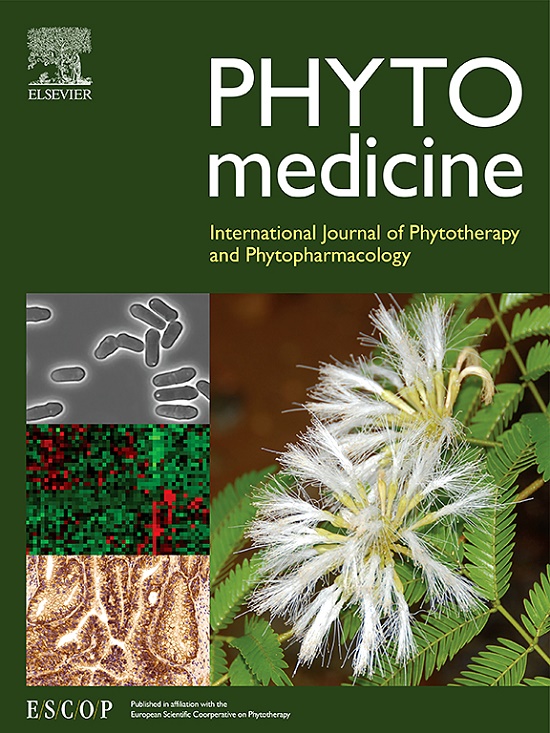Notoginsenoside R1 alleviates blue light-induced corneal injury and wound healing delay by binding to and inhibiting TRIB1
IF 6.7
1区 医学
Q1 CHEMISTRY, MEDICINAL
引用次数: 0
Abstract
Background
With the escalating use of digital devices, blue light (BL) exposure has emerged as a critical concern due to its potential to cause ocular damage. This study explores the protective effects of notoginsenoside R1 (NR1), a bioactive compound from Panax notoginseng (Burkill) F.H. Chen (Sanqi), against BL-induced corneal epithelial injury.
Purpose
This research aims to investigate the protective effects of NR1 on BL-induced corneal injury and wound healing delay.
Methods
Human corneal epithelial cells (hCECs) were pretreated with NR1 (0–50 μM) or N-acetylcysteine (NAC, 10 mM), then exposed to BL (570 μW/cm²) for 24 h. Cell viability, proliferation, migration, and ROS levels were assessed using various techniques. In mice, NR1 (25 μM and 50 μM) and NAC (0.3 %) eye drops were administered during BL exposure. Corneal injury, healing rates, cell proliferation, migration, ROS, and inflammation were evaluated. RNA-sequencing, bioinformatics, and molecular binding validation identified tribbles homolog 1 (TRIB1) as a key molecule mitigating BL damage with NR1. Functional studies via gene silencing, overexpression, and pharmacological modulation further explored TRIB1’s role in BL exposure.
Results
NR1 significantly reduced BL-induced inflammation, ROS production, and inhibited migration and proliferation in hCECs and murine corneas. It also alleviated BL-induced corneal injury and delayed healing in mice. NR1 inhibited TRIB1 upregulation, a marker of BL-induced injury and healing delay. Overexpression of TRIB1 negated NR1’s therapeutic effects on hCECs, while TRIB1 silencing mitigated functional impairment. In mice, increased Trib1 expression caused corneal injury and delayed healing, reversed by NR1 treatment.
Conclusion
NR1 shows potential as a therapeutic agent by inhibiting TRIB1 elevation in response to BL exposure, providing a novel promising target for corneal injury and wound healing delay induced by BL, and offering a comprehensive strategy for clinical pharmacological intervention.

求助全文
约1分钟内获得全文
求助全文
来源期刊

Phytomedicine
医学-药学
CiteScore
10.30
自引率
5.10%
发文量
670
审稿时长
91 days
期刊介绍:
Phytomedicine is a therapy-oriented journal that publishes innovative studies on the efficacy, safety, quality, and mechanisms of action of specified plant extracts, phytopharmaceuticals, and their isolated constituents. This includes clinical, pharmacological, pharmacokinetic, and toxicological studies of herbal medicinal products, preparations, and purified compounds with defined and consistent quality, ensuring reproducible pharmacological activity. Founded in 1994, Phytomedicine aims to focus and stimulate research in this field and establish internationally accepted scientific standards for pharmacological studies, proof of clinical efficacy, and safety of phytomedicines.
 求助内容:
求助内容: 应助结果提醒方式:
应助结果提醒方式:


